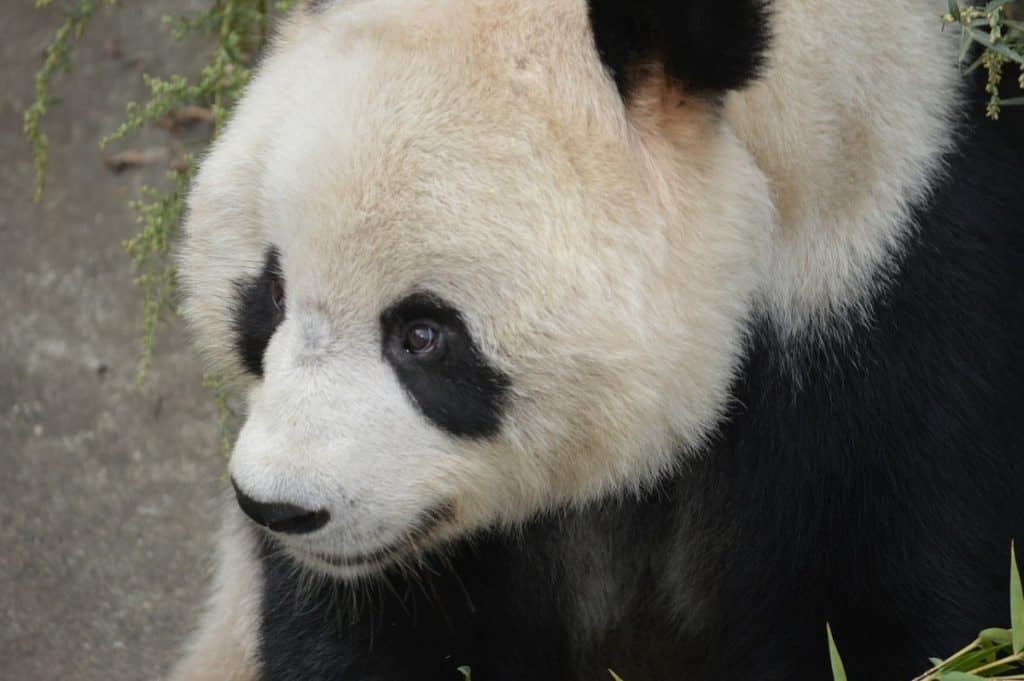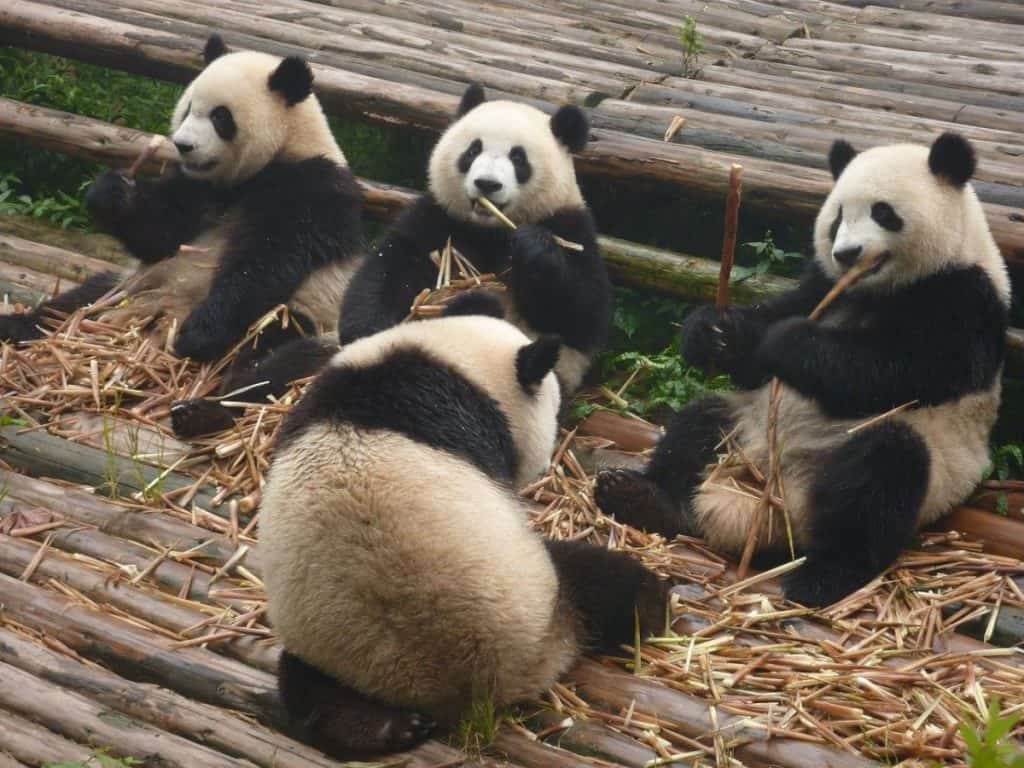The social life of a panda is generally solitary for most of their lives apart from chance encounters or if there is plenty of food in one area. However, they are more social during the two-month mating season, from March to the middle of May.
Giant pandas reach sexual maturity between the age of four and eight. Females enter oestrus between March and May and are polygamous, with five or six males vying for their attention. They can give birth to up to nine cubs throughout their life but only give birth to one or two cubs every two years. They give birth in dens, and cubs leave their mother’s side within two years.
Giant pandas mate in the wild like other animals, but their numbers are declining due to their low birth rate. It is tough for pandas to breed in captivity due to the lack of male competition or experience.
Did you know giant pandas are aggressive? Find out more here

Oestrus
Females come into heat (oestrus) once a year, although sometimes this also occurs later in Autumn. Oestrus lasts for just two to three weeks, and before ovulation, the female’s behaviour alters. They become more vocal, and she scent-marks more frequently. They eat less and become restless.
The scent-marking attracts the attention of any males in the area who want to mate. The males who wish to breed advertise their position using vocalizations. They will bleat, chirp, growl, and moan so that females can hear them. For the sound to carry, they will usually make noises after climbing up trees, allowing the sound to be heard a couple of kilometres away.
During oestrus, pandas often encounter others. Males will wrestle with each other to get the attention of females, while females will usually bite, wrestle and tease the males. Although not ordinarily social, 5 or 6 males may gather for the attention of a female. If the females move on, then they will follow. One male, generally the largest, will be the dominant male and will mate before any others. However, once they have mated, the male will move on, and the female may mate with other males.
Although a panda will stay in heat for a few weeks, they will only allow the male to mount them during the two or three days around ovulation. She will present her rump to the male, backing up to him and becoming flirtatious. The male will squat behind with his forepaws on her back, copulating several times. Each time does not last long and is generally between 30 seconds and 5 minutes. The male, like a cat, will sometimes bite the neck of the female. Once the act is completed, the female will run away, rejecting the male.
Pregnancy is relatively short in pandas lasting between 3 and 5 1/2 months after copulation. Pandas, as with bears, can delay implantation. After fertilization, the egg divides until it reaches the blastocyst stage. While in most other species, the blastocyst implants itself in the uterus lining to develop, in pandas, the blastocyst floats around in the uterus before implanting. This allows the cub to be born at a time of the year that is favourable to both the mother and cub. If there is bad weather or a lack of food, the implantation can be delayed for up to 4 months.
Giant Pandas: Unveiling Their Natural Adversaries
Birth
A den to give birth in needs to be found by the female, and a dry cave or a hollow tree trunk will suffice. They will build it up with pieces of bamboo and bark. They keep the dens clean and use their bodies to block the entrances to protect the cubs and keep the shelter warm and dry.
Although they sometimes give birth to three cubs, most pandas give birth to one or two. However, they will usually only attempt to raise one. The delivery is usually quick, and twins are born within 30 minutes of each other. The mother will immediately nurse her squealing infant.
Although the gestation period is long, the cubs are born small, weighing up to 150g and 16cm in length. They have a sparse layer of white hair but none of their characteristic black fur. They are blind when born with a long tail.
Do you know the main characteristics of pandas? Find out here
Cub Growth
- One week old – The first patches of black appear around the eyes and on the shoulders and ears. The eye patches grow in circles around the eyes. The cub is noisy, with lots of squeaks and squeals.
- Two weeks old – The legs become black, and the coat thicker. The patches around the eyes become oblong, which carries over into adulthood.
- Three weeks old – The cub doesn’t squeal as much. The tail is still long for the size of the cub.
- Four weeks old – The eyes are now sensitive to light but are not open. The markings are now developed, but the tail still looks too long for the cub.
- Five to six weeks old – The eyes are partially open
- Six to seven weeks old – The eyes become fully open, but their sight is still not good. They can crawl and lift their head. The cub suckles up to 10 ten times a day.
- Ten to eleven weeks old – The milk teeth appear, and the cub takes its first tentative steps.
- Three months old – The cub can now walk well and weigh about 5kg.
- Four months old – The cubs start to play a lot and weigh 9kg.
- Five months old – The cub can now run for short distances and loves to play, and they only suckle one or two times a day. They now weigh up to 10kg.
- Six months old – At this time, they begin to eat solid food and their weight increases rapidly.
- Eight months old – The cub is now fully weaned.
Do you know what the predators of red pandas are? Find out here

The life of a young panda
From the age of 8 months to about 1 1/2 years old, they stay with their mother, although they may leave to hunt for a suitable home territory before coming back. Females will not go into heat two years in a row as lactation suppresses oestrus the next year until the cub has left.
Females can reproduce every two years, although if the cub is lost during the suckling period, they can become pregnant again the following year.
Unfortunately, as with all small animals, many perish before adulthood, and many cubs die before reaching 2 1/2 years old. Predators of pandas include leopards, wolves, golden cats, foxes, martens, and red dogs. However, some are lost when the mother is attacked or disturbed.
Up to the age of 5 years, pandas are incredibly playful, but once over 5, they become much more serious. Pandas can live up to about 25 years old, with a female raising 9 cubs in their life.

